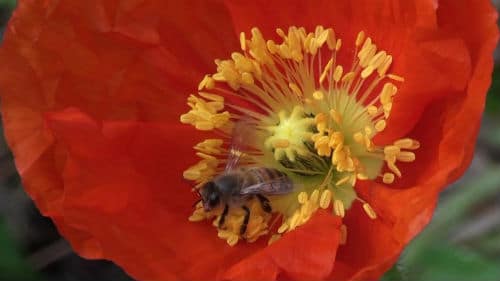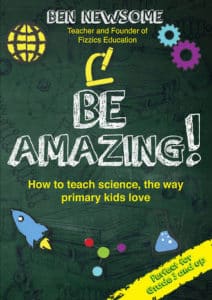
Science and gardening just works!
Students absolutely love getting their hands dirty in the garden. The traditional school garden offers a great chance to not only teach students about growing and caring for plants but also the importance of biodiversity, how agricultural science impacts their everyday lives and even local culture & customs. Even if your school doesn’t have much room to put a full blown garden in you could still create a series of planting beds along the windowsill of your classroom (makes for great classroom stimulus material!). The following lists some ideas that you could use to put some extra STEM learning opportunities in your school garden, just have your students wear gloves and hats for the job!
Create experimental plots
Putting in a school vegetable patch offers a fantastic opportunity for students to create their own plots to experiment with. There are so many variables that the students could control; the plant species chosen, the light, watering schedule and more. The actual soil you put the plants in offers a number of variables you could control such as the soil pH, texture and salinity. Your students could run a longitudinal experiment on how changing one of these variables above impacts upon plant height, leaf number, leaf colour, number of fruits grown or more. Additionally, your students could document their learning as they go via a classroom blog and the whole class could be managed via an app such as Trello.
Don’t forget to set up your experimental plots with clear labels of not only the student’s name but also the plant species, the plot number, the date of the trial and the variable being tested!

Garden plots at Redfern Community Center
Learn propagation techniques
Having a school garden offer the opportunity for students to learn plant propagation techniques used in modern plant nurseries. Why not see if you can work with your community to create a small glasshouse whereby a quick trip local hardware store could quickly give you a series of shelves, plant trays, plant root striking hormones and simple tools to get the job done. If your school budget is tight you could also set up a mini-greenhouse using milk crates, cable ties and plastic sheeting. Whilst you’re at it, this could be a great opportunity to ask a horticulturalist to share their experience with your students and give them deeper insight into how it’s all done in the real world.

School garden plots with a greenhouse at Warrawee Public School
Discover student misconceptions
Simply walking students through the school garden can help you pick up a variety of student misconceptions on plants. It can be quite startling to learn that students can often have mixed ideas in terms of what they think a fruit, drupe, seed, root, tuber or leaf actually is. Check out this blog post which covers a way of teaching parts of the plant using your groceries from your fridge, a perfect way to prime your students prior to setting up their own plant science experiments!

Can students identify the plant parts?
Learn about composting
You could use the school garden as a way of teaching the value of composting vegetable waste. Not only is this a useful way of teaching recycling, but you’re also getting the students to emulate processes found in nature. You could also set up a worm farm too! Just be careful to have students wear facial masks when working with compost and wash their hands afterwards.
Measure the weather
You could get students to set up rain gauges and anemometers to measure local climate conditions that your school garden is exposed too. You could use data loggers to make note of the ambient temperature & humidity levels and record the plant’s responses to these abiotic factors.

Hygrometer in a rainforest
Create an indigenous garden
Apart from setting up your school garden patch to create an area for the classic plants found in gardens worldwide, why not put in some indigenous plants endemic to your area? Speak with your local council or bush care group to find out what plants you might be able to put into your school to improve the habitat for local fauna. You might even find that you could get free plants through National Tree Day. Try to not simply plant the largest, prettiest flowers but instead create a mix of plants of different shapes and sizes that are known to associate together in your area’s plant community. We’ve run a number of video conferences to schools to help classes setup their own ecological communities and you’ll find that allowing students to create the school garden themselves will give them ownership of the site and therefore respect it.

Blueberry Ash flowers
Have students create a journal
Perhaps you could get students to keep a journal on the animals they find in the school garden. You could get students to look underneath leaf litter to find invertebrates scurrying around as well as watching where bees are travelling to and from (perhaps an opportunity to discuss how bees navigate using the Sun!). You could also get students to take recordings of bird calls occurring in the area.

Kids love watching how bees pollinate flowers!
Make a bush foods garden
Putting in endemic plant species into your school garden could raise the possibility of planting in native ‘bush tucker’ foods too. Whilst you could source these plants from the local nursery it might be even better to get a local indigenous elder to visit your school and speak to the students about traditional ways of using plants in the region – it doesn’t have to be just about eating the plants, it can be about soap making, dyes, rope and more. It is important however for safety that you stress that students should not eat plants found in the wild without an expert guide. A great example of a partnership being set up between schools and aboriginal elders can be found via the National Indigenous Science Education Program out of Macquarie University which works closely with schools, indigenous elders and scientists to get students into science as well as help scientists learn more about traditional methods of using Australian plants that could be employed in agriculture and medicines
Learn about weeds
The establishment of a school garden invariably means that you’ll have to maintain it. Not to worry though, this is another learning activity! Students are often not aware of the types of weeds that can be found in a garden and they can, therefore, learn different control techniques. This could also lead on to a discussion about the impact of weeds in local bushland and how they are spread (wind, water, animals or dumping). Great knowledge when taking your students out on a bushwalk!

Asparagus fern; forms a dense mat that can cover bushland understories
Setting up a school garden can very much a whole community effort. I’ve seen schools put on working bees where in one day all of the plant beds get made, filled, mulched and planted with the help of families keen to earn their afternoon BBQ! If you ask around your school you might find arborists that are more than happy to donate excess mulch they have from tree lopping, you could find a timber store able to donate wooden beams and off-cuts for the garden beds and a landscaping supplier prepared to sponsor the topsoil and fertilizer. In many cases, local businesses are more than happy to help and you could show your appreciation by showcasing them in your school newsletter. As always, if you make it a win/win situation you’re bound to have people ready to help you get students into the garden and learning about agriculture and the environment.
Happy teaching,
NEW Primary science teaching book!
“Be Amazing! How to teach science, the way primary kids love”



























Comments